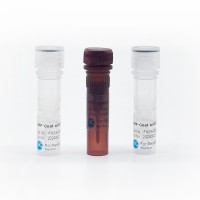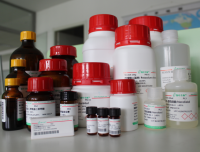Nanoparticles are solid particles ranging in size from 1 to 1000 nm (1 μm). They consist of macromolecular materials and can be used therapeutically or prophylactically, for example, as adjuvants in vaccines or drug carriers, in which the active principle (drug or biologically active material) is dissolved, entrapped, or encapsulated, or to which the active principle is adsorbed or chemically attached (1 –3 ). One of the first areas of application of nanoparticles was their employment as adjuvants for vaccines. The most frequent method for the preparation of nanoparticles for this purpose was, and still is, emulsion polymerization. The polymers that can be employed for this process include poly(methyl methacrylate) (4 ,6 ), polyacrylamide (7 ), and poly(alkyl cyanoacrylates) (8 ,9 ). Among these polymers, poly(methyl methacrylate) proved to be by far the most optimal and suitable material (10 ,11 ). Nanoparticles made from polyacrylamide or poly(alkyl cyanoacrylate) possess the disadvantage that they either require large amounts of organic solvents and surfactants for their production, followed by laborious cleaning procedures as in the case of polyacrylamide (7 ), or their adjuvant effects are very poor (8 ,9 ), as with the poly(alkyl cyanoacrylates).
![DKFZ-PSMA-11,4,6,12,19-Tetraazadocosane-1,3,7-tricarboxylic acid, 22-[3-[[[2-[[[5-(2-carboxyethyl)-2-hydroxyphenyl]methyl](carboxymethyl)amin](https://img1.dxycdn.com/p/s14/2025/1009/171/0405943971658126791.jpg!wh200)





